Research Methodologies – A reflective statement
Research Methodologies.
For this module, my research methodology included the use of photography to document various things that were relevant to my theme, drawings to formulate my idea and to keep me focused on it without losing my train of thought. I used books, did internet searches for material that was relevant to my work, visited galleries and exhibitions and also used magazines as a source of reference.
Various artists were looked at to see what they were doing in their practice where they had used textiles and print, explored the idea of simulating embroidery to make print (text) and using wool to write words that conveyed a message to the viewer. This only required a template of texts which was used as a guide for the laying of the strings to outline the individual letter and form a word. Originally, the template wasn’t involved at the early stage of this concept development, until a much later stage. I came up with the idea whilst creating the ‘scale’ pattern of the shredded paper textile.
Having read about the progenitor of bio-textiles, Suzanne Lee who created textiles from harmless bacteria, in Quinn,B. 2010, (Textile Futures) I felt encouraged that she came up with such an idea because of her interest in quantum physics. She had no background whatsoever in physics, but believed that science can be merged with textiles.
In the same vein, I was looking to explore ways of bringing quantum physics into textiles due to my interest in the subject. My intention was to encapsulate things in what seemed to be a void, which was inspired by Professor Jim Al-khalili’s BBC documentary “Everything and Nothing”.
The first generation of the encapsulated textiles I made were created with the use of a hot knife to seal the joints of the individual polyethylene membrane, which worked but didn’t have the desired finish. I found out about the heating-press facility that was available in the fashion department and found that I wouldn’t be able to use it because there was a queue for the facility. (They use it to iron press clothes). So I thought I would just use my pressing iron instead, it works on the same principle and enabled me to be more in control of my time. All I had to do was insulate the plastic membrane from the direct heat of the iron by using tracing paper or grease-proof paper.
As my first point of reference, I looked at Jann Haworth who said : “I failed to see the barriers between correct use of materials and incorrect ones – between high art and crafts….we are perplexed that something so obvious and simple as a wild, free use of materials and form can evoke such critical analysis. There are no rules in art” – Haworth, J. Contemporary Textiles; pg5; London UK, black dog publishing; 2008.
Indeed I have to agree with her because I feel that whatever use we put a material into is neither good nor bad. It will become what you want it to be, all that is needed is an idea and a choice of material that could be suitable. This statement of hers’ opened lots of vistas for me as to the different use that materials can be put to, even when it means going against the traditional norm. It ignited in me ideas of how I could use my ‘nothing textile’ to create a three dimensional piece.
To make this a reality I focused on Haworth’s remark that went thus; “we live with the abstract, the emotional, diversified mark making and impossible to tame materials. We embraced experiment and our mistakes. The nature of the truly creative is rebellion – against what has been, against habit, the norm….” – Haworth, J. 2008,P.5. (Everything is the stuff of Art) Contemporary Textiles.
These words resonated with me because I deem myself a rebel inside; I tend to go against established norms and practices. I also find that I want to experiment with new materials and thinking in a rather abstract manner. So, on this Master’s course, I had embarked on a journey which I had no idea where it was going to lead me knowing that I was bound to make mistakes and hoped to learn from them.
I carried out some research into the use of resin to encapsulate shredded paper as part of my quest for a new sustainable material. This was fraught with mistakes that I made and which I learnt from. I also learnt how to make moulds and cast with silicone rubber, which I used to cast papier Mache, the casting of conkers and acorns in resin, encapsulating gels in plastic film which led on to encapsulating waste shredded paper in clear plastic that also led to the introduction of text in them. By introducing written text in my polyethylene textiles, this was my own way of breaking away from the norm of printing in inks.
To start with, if we look at the origins of printing in inks, according to Wikipedia, the history of printing began at about 3000BC with duplicating images. While this is not to be held as gospel, Mary Bellis of About.com says the earliest printing book known is the “Diamond Sutra” that was done in China in 868CE. It is also believed that book printing may have occurred way before that. Printing was very few and far in between before the advent of Gutenberg. Very few editions were made and they always were decorative or full of pictures and designs. They carved the material to be printed into “wood, stone and metal, rolled with ink or paint and transferred by pressure to parchment or vellum. Books were hand copied mostly by members of religious orders”. – Bellis, M. www.about.com
Johannes Gutenberg made printing very cheap by creating a printing press machine that used moveable type and this remained the norm until the 20th century, according to Mary Bellis.
With this background in mind, I feel like I want to do something different. I will be making a three dimensional sculptural piece and introduce my new textile which would have inscriptions on it with the use of wool, thread or twine.
The most influence to my work was derived from Ghada Amer. She uses needlework to create erotic images of the female body, according to Quinn, B.(2008) “….repeating the images serially to suggest a pattern…some of Amer’s artworks embroider richly–coloured satin with translations of texts taken from the Qur’an.” Quinn,. 2008, p.17
Whereas she cleverly stitched figures pretending that they were Arabic verses from the Quran, I have merely pretended to embroider, using this as a symbol to represent isolation and loneliness as was alluded to by Quinn, 2008, p.15. Textiles at the Cutting Edge (Contemporary Textiles) – “yet embroidery, as a solitary craft, also evokes a sense of isolation…it can also present an eerie sense of dislocation and unease”.
In other words, Amer has disguised her shapes and images of the female body by pretending that they were excerpts from the Islamic Holy Book, The Quran. In my case, I’m trying to use this embroidery simulation as a tool to communicate with the viewer by conveying those feelings through the use of my ‘embroidered’ words. Another artist who uses words in this way is Tracy Emin. Although, I find that some of her text inclusive works are a little bit simplistic and graffiti-like in their execution, but then that’s the kind of organic style that she has adopted. And yet, Sir, Peter Blake made some prints where he used graphics’ text to convey the message; “I love you” as a form of pop art.

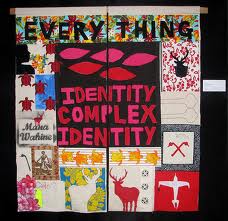
Fig.1. Tracy Emin’s works saying it with text on textiles –http://www.google.co.uk/imgres?qtracy+emin+art&hl.26/04/12.11:16


Fig.2. Pop art by Sir, Peter Blake – http://www.google.co.uk/imgres?q=sir+peter+blake&hl..26/04/12.11:16
Every research material I discovered was recorded on my blog: http://cs.adeythani.co.uk and was used as a springboard to document and follow up my research. Initially, in my quest for looking for new materials I was looking to make a textile that would have thermo chromic gels encapsulated in them. But this project was about making something 3Dimensional and not a product.
However, this led on to the lamination/encapsulating with resin and using aggregate materials like beads, shredded paper and sweet wrappers. Not all of them were successful due to the resin not curing properly. The most successful one was the resin encapsulated shredded paper.
Subsequently, I decided to continue with the encapsulation in clear and coloured polyethylene membranes because of the success with the resin and shredded paper cast. I wanted to see how it would work in plastic film. I also experimented with creating patterns using the shredded paper and then encapsulating them. To transfer the patterns, I created a template first, so that in the case of the fish scales or wavy stripe, all I had to do was follow the shapes on the template.
Printing paper off-cuts were collected and made into rosettes, twist-folded and encapsulated. I was also looking at other artists who had done installations and sculptures with this material, namely; Paul Hayes’ scrunched and twisted paper, Richard Sweeny’s pleated curve as both featured in the book; Paper, tear, fold, rip, crease, cut,(2009,p.p.50-53,58-59). What I did with the paper off-cuts was inspired by these artists..
As part of the encapsulation experiment, I also arranged bits of shredded cardboard into geometric shapes on a netting background and then encapsulated them; using bits of lace, sweet wrappers, and strips of chicken leather (my creation).
I soon realized that I could do anything with shredded paper and went on to arrange them in wavy patterns, fish scales, stripes and herringbone with the help of a pressing iron. This was a development that I had been pursuing due to my predisposition to sustainability and creating new materials.
The next stage was to see what it would look like if drawings or writings were introduced. To find out, I made some graffiti on the side to be encapsulated, using acrylic paint, arranged bits of shredded paper around it and encapsulated. The result was very encouraging because the acrylics behaved very well in response to the heat. This led me to try screen printing on the material with graphic texts and then later using wool, embroidery threads and twine as a medium rather than inks. The idea was to simulate embroidery without any stitching involved.

Fig.3.Encapsulated shredded paper in wavy stripes and printed texts saying; ‘I am so not rubbish’.
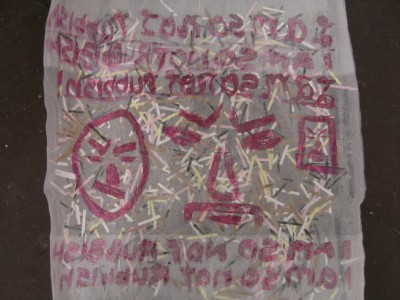
Fig.4. Encapsulated textile with graffiti and shredded paper.
As I wanted to use ropes in my final piece, I looked at other artists who had done sculptures in rope amongst these are: George Fairhurst in his design for the Eden Project, Orly Genger, making installations with knotted ropes, Xichang, with his huge cast of a knotted rope in Sichuan, China, Monte A Smith, making the human anatomy in rope, on Flickr.com and Bryan Veloso’s family struggles on Luciddaydreams.wordpress.com. – www.google.co.uk/22/12/2011

Fig.5. A rope installation by Orly Genger – Museo-magazine-orly-genger-BigBoss-2010_800 – Courtesy: www.googleimages.com-22/12/2011

Fig.6. Rope man by Monte A Smith. www.flickr.com – Courtesy: www.googleimages.com – 22/12/2011

Fig.7. Rope sculpture by George Fairhurst for the Eden Project. Courtesy:www.googleimages.com – 22/12/2011
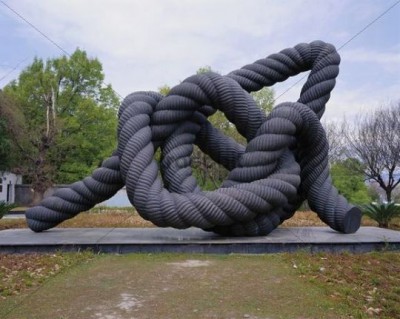
Fig.8. Giant Knotted rope sculpture, Xichang, Sichuan, China, Asia – Courtesy:www.googleimages.com -22/12/2011

Fig.9. Tags: family, life, love, rope sculpture, struggle,wood, by Bryan Veloso –luciddaydreams.wordpress.com – Courtesy: www.googleimages.com -22/12/2011
Yinka Shonibare was another artist that inspired me with his various installations. All his works feature sometimes headless mannequins attired in African prints that are styled in western fashion, playing on identities and quite theatrical scenes. For instance, “…By forcing unlikely elements together into surprising and humorous combinations, Shonibare exposes the myth of cultural authenticity to reveal the true complexity of cultural identities and the many conflicting stories behind them” – Jefferies,J.2008, P.182, Contemporary Textiles
This influenced my work by making me reference my cultural heritage with the hair style which was supposed to mimic the Nigerian goddess mask, ‘Olokun’ but could also pass for a European hairdo. The ambiguity that has been created with the figure supposedly being that of a male has made it become androgynous, so that one cannot tell if it was a man or a woman. This I feel probably references my sexuality as a gay man. The nets and the textile that adorns my sculpture are very theatrical making it command a presence and it looks like it’s saying ; “Look at me” “I’m a drama queen”.
The difference between my work and Shonibare’s is that he dresses up his headless mannequins in African prints that are styled in European fashion, but I have made my own bust casted in shredded paper and resin and then garbed it with material that hitherto had no value as such. Again where our similarities lie is in the style of the garb as this looks unintentionally like a mannequin in a Tutu with a cape draped over its shoulders referencing my European influence.
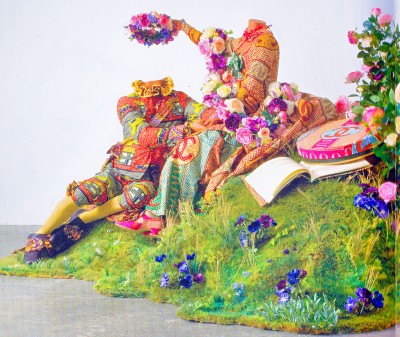
Fig.10. Yinka Shonibare’s work, The Crowning, 2007. Mannequins, dressed in Dutch, Wax printed textiles with
artificial silk flowers. – Jefferies, J. 2008, P. 182, Contemporary Textiles.
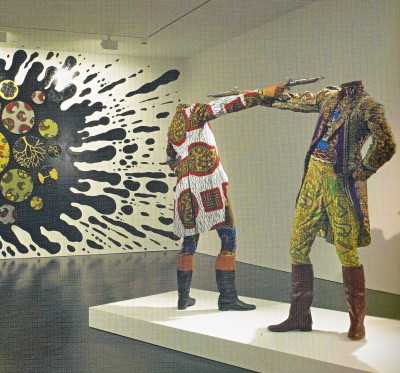
Fig.11. How to Blow up Two Heads at Once (Gentlemen), Shonibare, 2006. – Jefferies, J. 2008,P. 184, Contemporary Textiles.
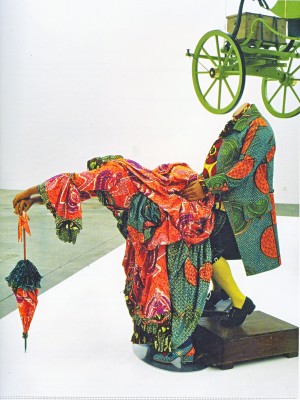
Fig.12. Mr and Mrs Andrews Without their Heads, 1998 by Yinka Shonibare. – Jefferies, J. 2008, P.185 Contemporary Textiles
The only similarity to Ghada Amer’s work and mine is in the concept of writing hidden messages using threads to write verses of the Quran and transforming these words into “erotic images of the female body, and repeating them serially as if to suggest a pattern” – Quinn,B. 2008, P.17(Textiles at the Cutting Edge)Contemporary Textiles.
In contrast, I have merely used knitting wool to write words that convey feelings and also used the same medium to create allegorical symbols that tell the story of how these feelings have come about due to the breaking up of my once happy family and also used it to symbolize all the twists and turns that I have been through in my life since then. Also, whereas she has illustrated her work on canvas, I have done mine on a polyethylene textile material and encapsulated it.

Fig.13. Ghada Amer, The Definition of Fear in English, French and Arabic, 2007. – (Gagosian Gallery) Quinn,B.2008, Textiles at the Cutting Edge, Contemporary Textiles.P.16.
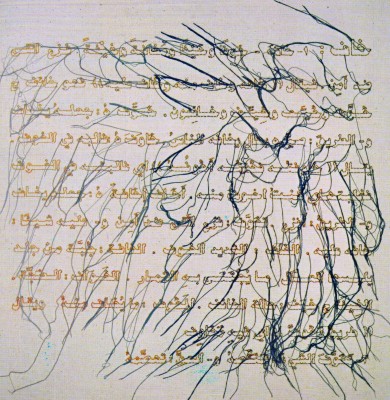
Fig.14. Ghada Amer, A Missed Kiss, 2002. – (Galleria Massimo Minini). Contemporary Textiles, P.96.
In summary, I have learnt to think creatively with new use of materials and processes, organising my time and with the use of resources like exhibitions, books and documentaries, been able to conduct analytical research. I still need to look to improve in the use of movie making media which I haven’t applied to this project.
I have taken this medium of execution of my work because initially, I was looking to do something sustainable and it seemed that it was going to change as the project went along, but then it veered back to the sustainability concept as I was able to recycle waste shredded paper and make my aggregate sculpture from this material as well as the textiles that are a component part of this work.
Finally, it is my belief that I can take my research skills, concept development, time management and my knowledge of the use of photography, use of different material options into my other modules and subsequently into the outside world. I have also learnt that there are no right or wrong ways in Creative Practice, seeing this through other practitioners – Everything is valid.
– Essay by Adey Thani.
Bibliography
Al- Khalili, J. ‘Everything and Nothing’ 2011.(TV Documentary) BBC1, BBC 4, 28 March, 2011, 21.00
Bellis, M. History of Printing, www.about.com. 26/04/2012 21.00
Haworth,J. 2008. Contemporary Textiles, London,UK, Black dog Publishing.
Quinn, B. 2010. Textile Futures, Oxford, New York: Berg Publishers.
Sweeney, R. 2009. Paper, tear, fold, rip, crease, cut, London, UK; Black dog Publishing
www.google.co.uk 26/04/2012
www.Wikipedia.com 26/04/2012 20.40
